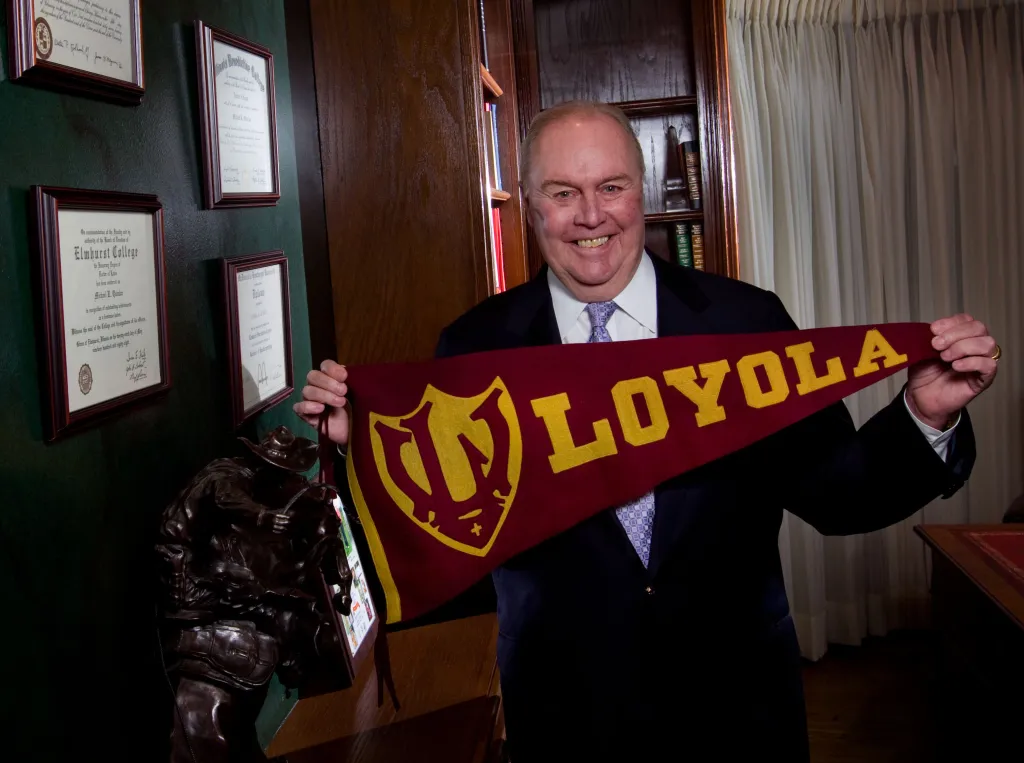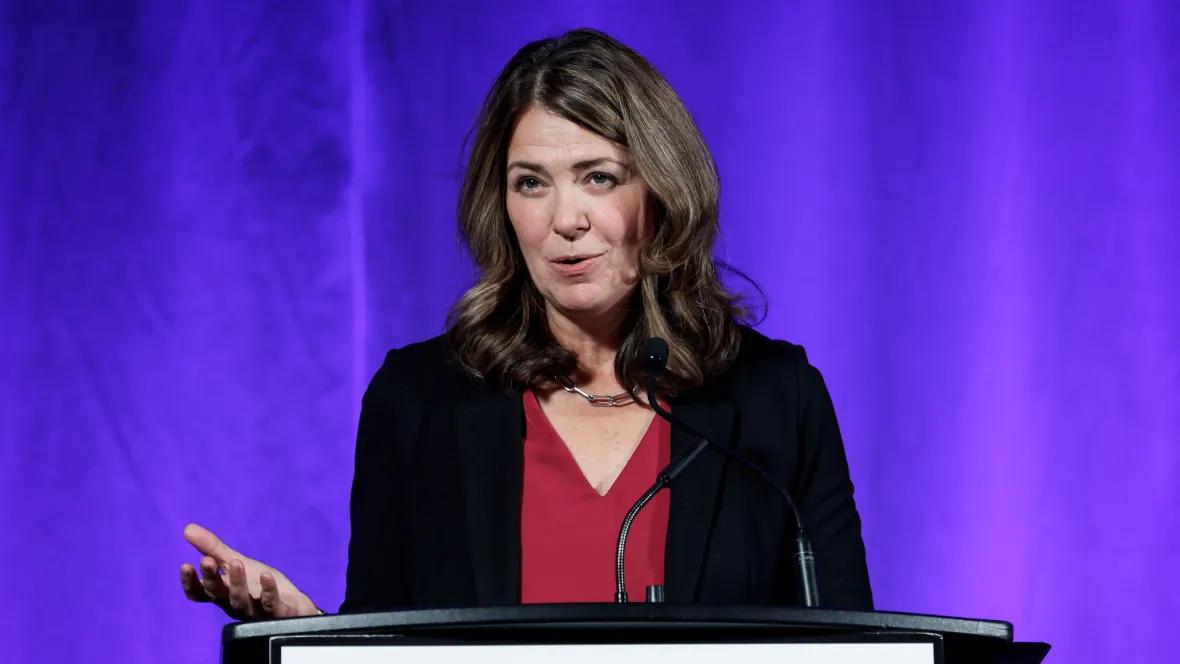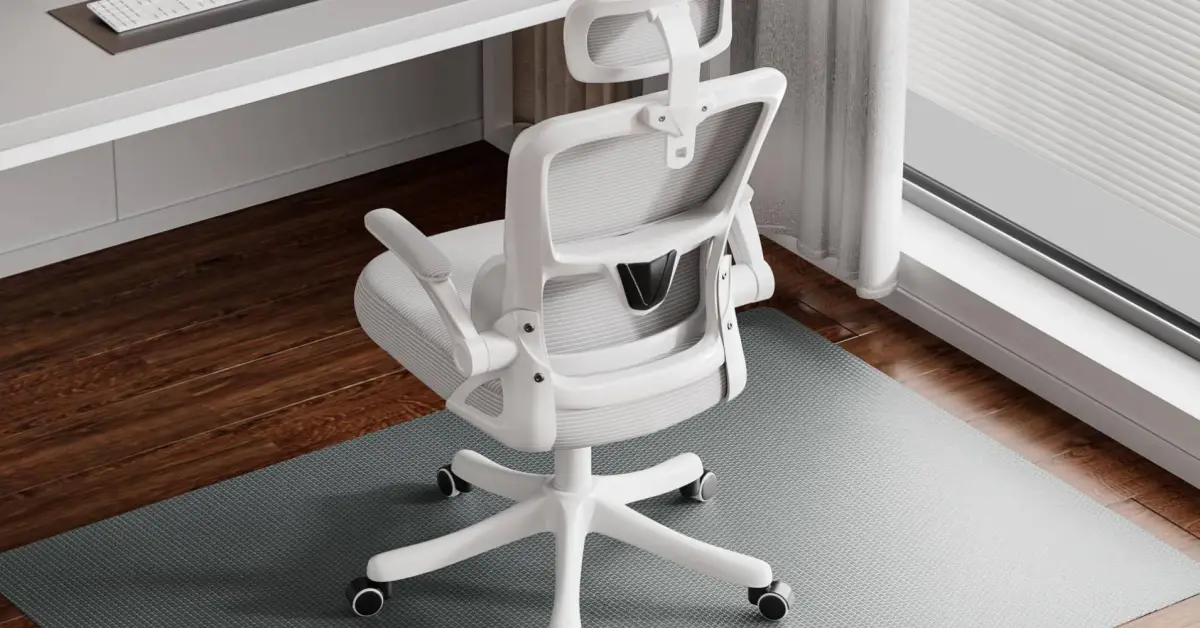
Michael R. Quinlan, the Oak Park native who rose from McDonald’s Corp.’s mailroom to become only its third CEO, died on Sept. 22 at his home. He was 80.
Quinlan’s death, coming after a long illness, was confirmed by his son, Michael. He had been a longtime Oak Brook resident.
Quinlan’s 35-year career at McDonald’s started when the hamburger giant’s headquarters were in Chicago, and then moved with the company in 1971 to the sprawling Oak Brook campus that the firm later vacated in 2018 for the West Loop. He served as CEO for 11 years. While in charge, Quinlan pursued global expansion and developed a reputation — at least early on — for glad-handing with the chain’s franchisees at restaurant openings.
Quinlan was also a generous donor to several Chicago-area institutions, including Loyola University Chicago — which renamed its business school after Quinlan — and Fenwick High School in Oak Park.
Born in Chicago in 1944 as the oldest of five children, Michael Robert Quinlan grew up on the Oak Park side of Austin Boulevard and was the son of a traveling salesman father and a mother who managed their home. He graduated from Fenwick High School in 1962. The first member of his family to attend college, he enrolled at Loyola University Chicago, where he earned a bachelor’s degree in 1967 on a full-tuition scholarship.
At Loyola, Quinlan’s roommate, John Martino, was the son of June Martino, a secretary and bookkeeper for McDonald’s founder Ray Kroc and one of the firm’s three original stockholders. While a sophomore at Loyola in 1963, Quinlan was hired to work part-time during the school year in the mailroom of McDonald’s at the company’s old headquarters at 221 N. LaSalle St. in Chicago.
“It was $2 an hour and I could name my own hours as long as I got the work done,” Quinlan told the Tribune’s John Gorman in 1986. “I averaged about 20 hours a week part-time for about 2½ years. Did some accounting, purchasing, a potpourri of things.”
A psychology and philosophy double major, Quinlan was open to a job at McDonald’s, but hearing nothing from the company, he applied to and was accepted by several top law schools. Eventually, he received the call from McDonald’s, and he joined the company full-time in 1966, while at the same time working part-time on his MBA, again at Loyola. He earned his MBA in 1970.
From the start, Quinlan was tabbed for big things at the fast-growing chain. He started in the company’s purchasing department and was taken under the wing of future McDonald’s vice chairman Edward Schmitt, who instructed Quinlan in the areas of training, licensing and real estate. In 1970, he took the helm of a restaurant in Carpentersville as an assistant manager.
“I scrubbed toilets and cleaned windows when it was 10 below,” he told the Tribune in 1986. “I’ve had the advantage of some good training.”
Quinlan later oversaw a deteriorated company-owned restaurant as store manager and then was named a field consultant overseeing 25 franchisees, followed by roles supervising company-owned restaurants, then overseeing a handful of field consultants.
In 1972, Quinlan was asked to open up a district office in St. Louis. He then oversaw a regional office in Washington, D.C., and was named a vice president in 1974.
Quinlan returned to Chicago in 1976 as a senior vice president. He joined the company’s board in 1979 and the following year he was named to a new post as president of McDonald’s U.S.A. He was named president of the entire company in 1982, at age 37.
Underpinning Quinlan’s leadership style was a concept he called “tight-loose” management, relative to the chain’s many franchisees.
“Certain things are rock solid, but within the rules there is a lot of room for entrepreneurship, to adapt to local conditions,” he told the Tribune in 1986. “If the idea works, we can disseminate it through the system. If we get 15 ideas, and 12 prove they don’t work, we still will have two or three victories.”
Quinlan followed McDonald’s philosophy of never tearing down its competitors in ads. He also continually defended the chain against attacks about the quality and healthiness of McDonald’s offerings.
“I know the kind of quality and uncompromising control that goes into all of our products,” he told the Tribune in 1986. “It angers me to hear people try to tear us down.”
In 1987, Quinlan was named McDonald’s CEO, succeeding Fred L. Turner. He took on additional corporate stripes when he was named the company’s chairman in 1989.
Quinlan steered McDonald’s through a difficult domestic business environment in the early and mid-1990s, jump-starting sales through discount menus and aggressive international operations, increasing its reach to more than 19,000 restaurants at the time, in 100 countries.
Later in his tenure, Quinlan proudly pointed to McDonald’s regaining some market share that the chain had lost to No. 2 Burger King in the mid-1990s.
“It’s hard. This is not an easy business to run every day,” Quinlan conceded to the Tribune’s Jim Kirk in early 1998. “Customers aren’t interested in our problems. Any pressure is self-generated.”
In April 1998, Quinlan, then 53, announced that he would step back as CEO in August of that year, but remain chairman.
“I’ve been CEO for more than a decade, and I think it is time to utilize the tremendous depth of management skill at McDonald’s as we move into the next century,” Quinlan told the Associated Press at the time.
Quinlan handed off the reins as chairman to new CEO Jack Greenberg in 1999, though Quinlan remained on the company’s board and as chairman of its executive committee from 1999 until 2001. Along with Turner, Quinlan also was part of a board coup in 2002 that ousted Greenberg and brought back former president and vice chairman Jim Cantalupo to be CEO. Cantalupo died suddenly in 2004 at age 60.
Quinlan retired from the McDonald’s board at the end of 2002.
Outside of McDonald’s, Quinlan served on many boards and was known for his philanthropy. He joined Loyola University Chicago’s board of trustees in 1983, and he became chairman in 1999. Quinlan and his wife donated more than a third of all privately raised funds for Loyola’s new Michael R. and Marilyn Quinlan Life Sciences Education and Research Center, which opened in 2004 on the university’s Lake Shore campus. And, Quinlan announced in 2012 that he would donate $40 million to Loyola’s business school, which the university then renamed as the Michael R. Quinlan School of Business.
“When people ask me where did I go to college, I am very proud to tell them I am a two-time graduate of Loyola,” Quinlan told the Tribune’s Jodi S. Cohen in 2012. “It has given me more than I have given it.”
Quinlan also gave $1 million to Fenwick High School as part of a capital campaign that kicked off in 1995. He also donated $3 million to Fenwick in 2018 to help fund a new 300-space parking garage on the school’s Oak Park campus.
Quinlan’s wife of 54 years, Marilyn, died in 2020. His son Kevin, who was Oak Brook’s village president from 2003 until 2007, died in 2021. In addition to his son Michael, Quinlan is survived by two grandchildren; a great-granddaughter; a sister, Katie Churchill; and a brother, Terry.
A visitation will take place from 3 p.m. to 8 p.m. on Sept. 30 at Sullivan Funeral Home, 60 S. Grant St., Hinsdale. A funeral will follow at 10:30 a.m. Oct. 1 at Notre Dame Catholic Church, 64 Norfolk Ave., Clarendon Hills.
Bob Goldsborough is a freelance reporter.



